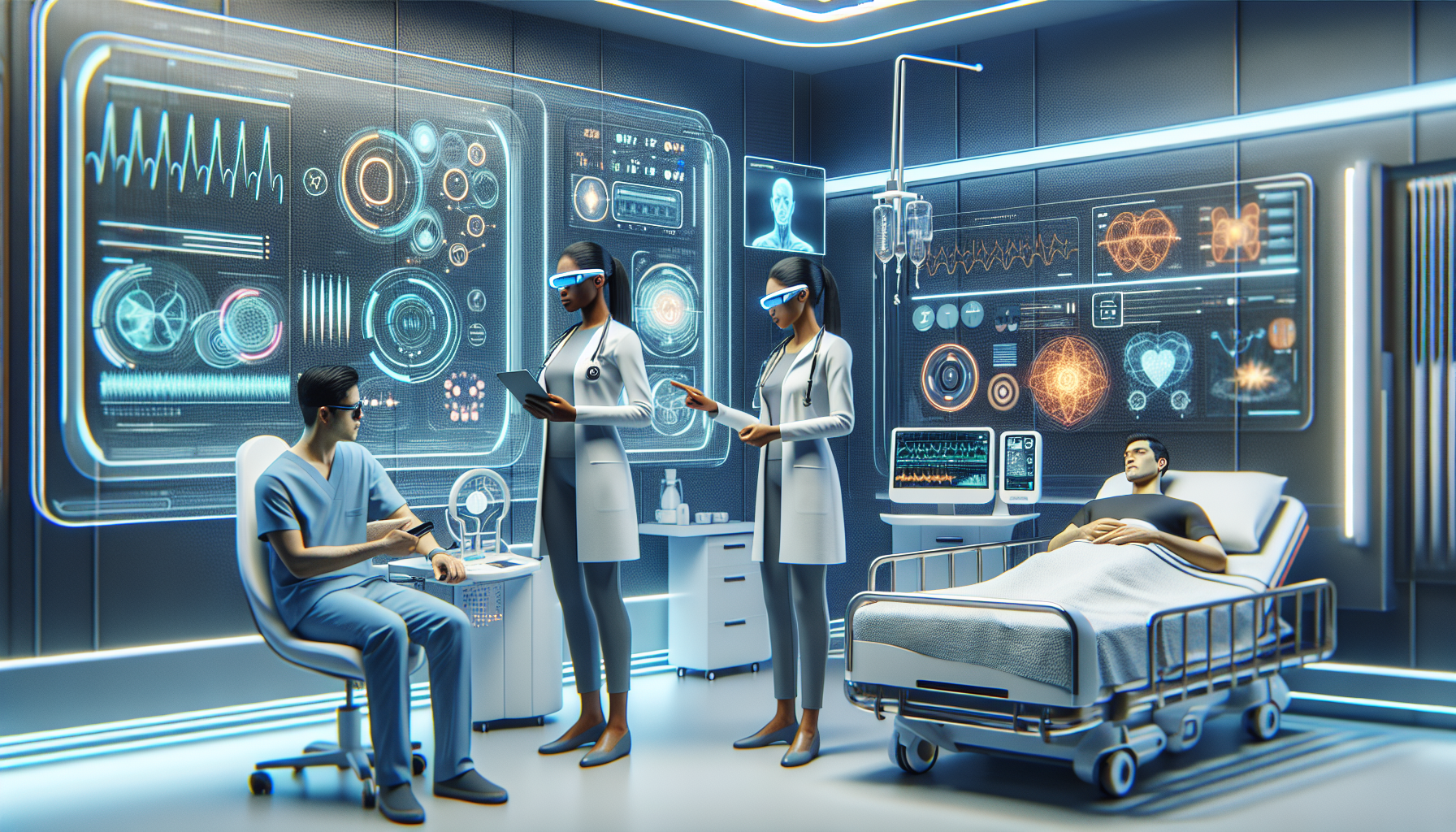Healthcare at the Frontier: AI and Automation in Patient Care
Understanding AI and Automation in Healthcare
Artificial intelligence (AI) and automation are revolutionizing the healthcare sector. By leveraging these technologies, healthcare providers can enhance patient outcomes, streamline operations, and reduce costs. AI refers to the simulation of human intelligence in machines programmed to think and learn. Automation involves the use of technology to perform tasks with minimal human intervention. Together, they create a paradigm shift in how patient care is delivered and managed.
Enhancing Diagnostics Through AI
AI algorithms can analyze complex medical data, improving diagnostic accuracy. Machine learning models can process images from X-rays, MRIs, and CT scans to identify anomalies. For instance, programs like Google’s DeepMind have demonstrated exceptional capabilities in detecting eye diseases from retinal scans, often outperforming human specialists.
Natural language processing (NLP) is another crucial aspect of AI used to extract relevant information from unstructured data, such as clinical notes and patient histories. This enables clinicians to make informed decisions faster, improving overall patient care.
Improving Treatment Plans with Predictive Analytics
AI also plays a crucial role in predictive analytics, enabling healthcare providers to personalize treatment plans. By analyzing a patient’s medical history, behavior patterns, and genomic data, AI systems can predict potential health risks and recommend tailored interventions.
For example, algorithms can identify which patients are at risk of hospitalization, allowing providers to take proactive measures to prevent exacerbations, ultimately leading to better health outcomes and lower costs.
AI-Powered Virtual Health Assistants
Virtual health assistants powered by AI can help manage patient care more effectively. These chatbots and voice-activated platforms can address patient inquiries, provide medication reminders, and offer personalized health tips. Tools like Ada Health and Buoy Health guide patients through symptoms, helping them understand their health issues and prompting them to seek medical attention when necessary.
Moreover, the use of AI in telemedicine has increased significantly, especially during the COVID-19 pandemic. Virtual consultations have become the norm, enabling healthcare providers to reach patients in remote areas and make quality healthcare more accessible.
Automation in Administrative Tasks
Administrative burdens often detract from patient care. Automation streamlines these tasks, freeing healthcare professionals to focus on patients. Routine activities like appointment scheduling, insurance verification, and billing can be automated through intelligent systems that communicate with patients and healthcare providers seamlessly.
Robotic process automation (RPA) is particularly effective for back-office functions. RPA diminishes human error and accelerates processes, allowing healthcare systems to operate more efficiently.
Robotic Surgery: Precision and Efficiency
Robotic-assisted surgical systems are another remarkable application of AI and automation in healthcare. These advanced robotic platforms enhance the surgeon’s capabilities, offering precision and control. For instance, the da Vinci Surgical System allows surgeons to perform minimally invasive procedures with enhanced accuracy, resulting in quicker patient recovery times and reduced hospital stays.
Automation in surgical procedures also extends to preoperative and postoperative care. Predictive analytics can help in preparing for surgeries by assessing potential complications and managing patient outcomes more effectively.
Enhancing Patient Monitoring with Wearable Technology
Wearable health tech, such as smartwatches and fitness trackers, has facilitated continuous patient monitoring. These devices collect real-time data on vital signs and physical activity levels, alerting healthcare providers to potential health issues before they escalate. AI algorithms analyze this data, providing actionable insights into a patient’s health trends.
Remote monitoring not only aids in chronic disease management but also enhances the level of care in geriatric populations, allowing healthcare providers to tailor interventions and improve patient quality of life.
Ensuring Data Security and Privacy in AI Systems
While the integration of AI and automation in healthcare offers exceptional benefits, it also raises concerns about data security and patient privacy. Strong measures must be implemented to protect sensitive patient information. Encryption, secure cloud storage, and compliance with regulations such as HIPAA are crucial steps that healthcare providers must take.
Healthcare organizations need to adopt a robust cybersecurity framework to mitigate potential threats and establish trust among patients regarding the safety of their data.
Challenges in Implementation and Adoption
Despite the potential benefits, the adoption of AI and automation in healthcare faces challenges. Resistance to change among healthcare professionals can hinder implementation, as some may perceive AI as a threat to their jobs. Education and training programs are required to assure medical staff that AI is a tool designed to augment their capabilities, not replace them.
Additionally, the high cost associated with implementing advanced technologies can be a significant barrier for smaller healthcare providers. Investing in the necessary infrastructure and training is essential for successful adoption.
The Future of AI and Automation in Patient Care
The trajectory of AI and automation in healthcare indicates a bright future. As technology advances, healthcare systems will continue to evolve, enhancing patient outcomes and operational efficiency. Collaborations among tech companies, healthcare providers, and regulatory bodies will facilitate the responsible and ethical development of AI applications.
In the coming years, we can expect AI to become an integral part of everyday clinical practice. As algorithms become more sophisticated, they will deliver personalized care, drive better diagnostics, and improve treatment efficiencies, ultimately transforming the patient care landscape.
SEO Best Practices for AI in Healthcare Content
To ensure this article is SEO-optimized, focus on relevant keywords that capture the essence of AI and automation in healthcare, such as “AI in healthcare,” “automated patient care,” “robotic surgery,” and “predictive analytics in healthcare.” Utilizing these keywords naturally within the content, while maintaining a reader-friendly narrative, will enhance search visibility.
Proper use of headers (H2, H3) creates a structured flow, making it easier for readers and search engines alike to navigate the article. Integrating internal and external links can further solidify the content’s authority in the healthcare domain.
Alt text for images related to AI and automation provides context and can improve the article’s SEO. Encourage engagement by posing questions or prompting readers to comment on their thoughts about the future of healthcare technology.


